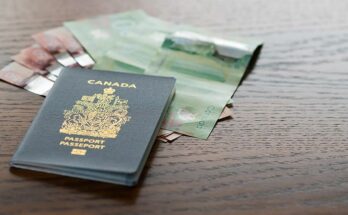Canada has become one of the most sought-after destinations for international students, offering world-class education, cultural diversity, and a welcoming atmosphere. If you’re planning to study in Canada, obtaining a student visa is one of the most critical steps in the process. The processing time for a Canada student visa can vary, and knowing what to expect is crucial for planning your journey. In this guide, we’ll explore the steps, timelines, and tips to help you navigate the student visa process smoothly.
Understanding the Canada Student Visa
What Is a Canada Student Visa?
A Canada student visa, officially called a study permit, is an essential document that allows international students to study at designated learning institutions (DLIs) in Canada. It is typically issued alongside a temporary resident visa (TRV) or electronic travel authorization (eTA), depending on your nationality.
Types of Study Permits in Canada
- Short-Term Study Permits: For courses lasting six months or less, you may not require a full study permit. However, it’s always wise to verify this with your specific institution.
- Long-Term Study Permits: For programs such as bachelor’s, master’s, or Ph.D. degrees, a full study permit is mandatory.
Steps in the Application Process
1. Preparing Your Application
Before applying, ensure you gather all necessary documents. These include:
- Letter of acceptance from a DLI.
- Proof of sufficient funds to cover tuition, living expenses, and return transportation.
- A valid passport.
- Academic transcripts and other required certificates.
2. Submitting Your Application
You can submit your application either online or through a paper-based method. While online submissions tend to be faster and more efficient, the choice depends on personal preference and accessibility.
3. Biometrics and Medical Exams
After submitting your application, you may need to provide biometrics (fingerprints and photo) and undergo a medical examination, depending on your home country and the program’s requirements.
4. Reviewing and Processing of the Application
Once you’ve completed all steps, the visa office will assess your application based on your eligibility, financial resources, and intent to return to your home country after your studies.
Canada Student Visa Processing Time
General Processing Timeframes
The time it takes to process your student visa depends on several factors. On average:
- Online applications: 4-6 weeks.
- Paper-based applications: 8-10 weeks.
However, these durations can vary widely depending on your country of residence.
Factors That Influence Processing Times
- Applicant’s Country of Residence: Processing times can be shorter or longer depending on the region. For example, applications from countries with a high volume of requests may experience delays.
- Time of Year: Peak periods, such as the months leading up to the academic intake seasons (September and January), often see slower processing.
- Completeness of Application: Errors or missing documents can cause delays.
How to Check Your Visa Application Status
You can track the status of your application online using the Government of Canada’s portal. Ensure you have your unique application number handy for updates.
Tips to Expedite Your Application
- Submit a Complete and Error-Free Application
Double-check all documents and ensure your forms are correctly filled out. Missing or inaccurate information can significantly delay processing. - Use the Student Direct Stream (SDS)
Eligible students from countries like India, China, the Philippines, and Vietnam can take advantage of the faster SDS option, which offers processing times of approximately 20 days. - Apply Early to Avoid Delays
Starting the application process several months before your program begins can save you stress later.
Challenges in Visa Processing
Common Reasons for Delays or Rejections
Some of the most frequent causes for processing delays or outright refusals include:
- Insufficient proof of financial support.
- Lack of a clear study plan or explanation for choosing Canada.
- Missing or incomplete documents.
How to Handle Delayed or Rejected Applications
If your application faces delays, reach out to the visa office for updates. For rejected applications, identify the reasons for refusal and address them carefully before reapplying.
What Happens After Receiving the Visa?
Once you’ve been granted your study permit, it’s time to prepare for your move!
- Book your flight and arrange accommodations in Canada.
- Ensure you meet post-arrival requirements, such as presenting your letter of introduction and study permit approval to the border officer.
Conclusion
Navigating the Canada student visa process may seem overwhelming, but with proper planning and attention to detail, it’s entirely manageable. By understanding the processing times, following the steps diligently, and avoiding common pitfalls, you’ll be well on your way to starting your educational journey in Canada.



